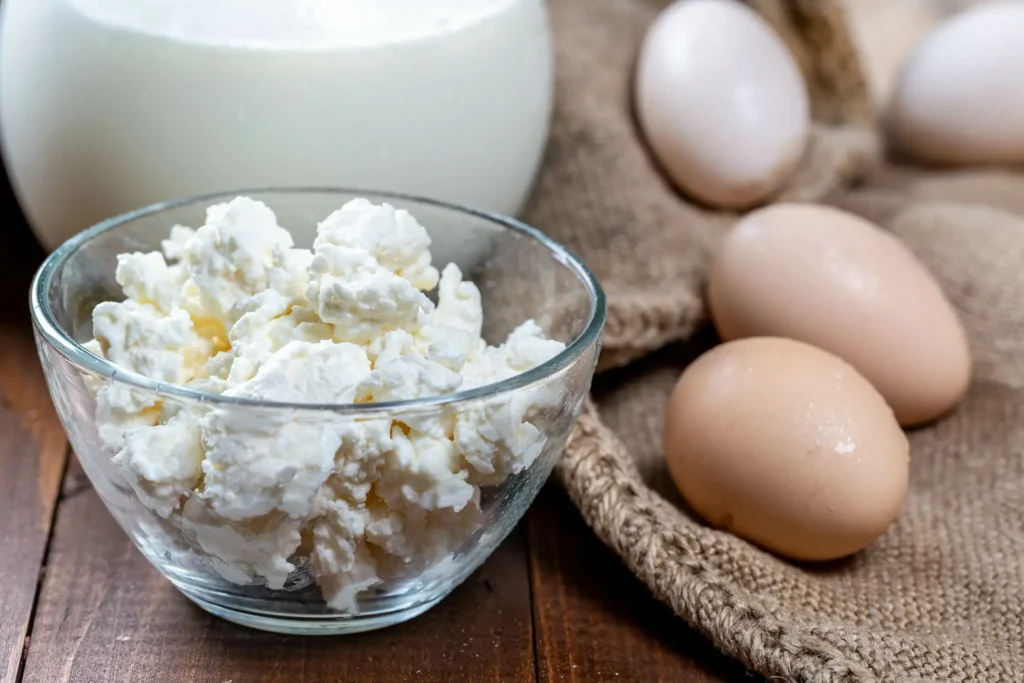What does cottage cheese taste like? Cottage cheese has a mild and slightly tangy taste with a creamy, light, and soft texture. The flavor can vary depending on the fat content; full-fat versions are richer and creamier, while low-fat and non-fat varieties are less creamy and more tart. Some people describe it as having a flavor profile milder than other cheeses but with a severely off-putting smell, which can make it less appealing despite its creamy and soft texture. It’s often compared to natural yogurt or sour cream but is less tangy and sour, and it pairs well with fruits like grapes, peaches, or strawberries due to their sweet taste and low acidity.
What does cottage cheese taste like
Cottage cheese, a staple in many diets worldwide, is often celebrated for its versatility and health benefits. But beyond its nutritional value, what exactly does cottage cheese taste like?
Texture of cottage cheese
The texture of cottage cheese is characterized by its soft, creamy, and slightly lumpy consistency. It consists of small, moist curds loosely bound together, giving it a heterogeneous and somewhat soupy texture. The curds are formed during the cheese-making process when milk is coagulated, and the whey is drained, retaining some moisture in the curds. The addition of a cream dressing to the curds is a distinctive step in making cottage cheese, contributing to its creamy taste and texture. The size of the curds and the extent of whey drainage can affect the texture, with larger curds resulting in a chunkier feel, while smaller, well-drained curds create a smoother mouthfeel. Overall, cottage cheese should have a clean, milky taste with a texture that resembles yogurt in thickness and creaminess.
Flavor of Cottage Cheese
Cottage cheese is known for its distinctly creamy, milky, and slightly sour flavor. It has a very light milky aroma and can sometimes taste a bit bland with a salty undertone. The flavor profile is milder than other cheeses, but it can have an off-putting smell that some compare to spoiled milk. However, once tasted, the smell generally dissipates, leaving the creamy and soft texture to be enjoyed. The taste can vary based on the milk content; higher fat content leads to a milder flavor, while low-fat varieties can be more sour.
Factors that influence the taste of cottage cheese
Several factors can influence the taste of cottage cheese, making it a versatile ingredient that can vary in flavor:
- Freshness: Fresh cottage cheese typically has a better taste and texture. Over time, cottage cheese can develop a more sour flavor as it ages.
- Fat Content: The fat content significantly affects the taste. Higher fat cottage cheese tends to be creamier and milder, while low-fat varieties can taste sourer, almost similar to sour cream.
- Milk Source: The type of milk used to make cottage cheese can impact its flavor. For example, cottage cheese made from cow’s milk may have a different taste compared to one made from goat’s milk.
- Curd Size: The size of the curds can also affect the taste and texture. Large curd cottage cheese has a chunkier texture, while small curd varieties are smoother and may have a slightly different taste.
- Additives: Some cottage cheeses have added cream or salt, which can enhance the flavor and make it richer or saltier.
- Diet of the Cows: The diet of the cows that produce the milk can influence the flavor of the cottage cheese. Milk from cows that graze on fresh grass may result in a different taste compared to cows fed with grain.
- Processing Techniques: The methods used to coagulate the milk and drain the whey can lead to variations in taste and texture.
By understanding these factors, you can select and enhance the cottage cheese to suit your taste preferences, whether you prefer it plain or with added flavors and textures.
Conclusion
In conclusion, cottage cheese is a unique dairy product with a flavor profile that is both versatile and distinct. Its creamy, mild, and slightly tangy taste, coupled with a soft and sometimes lumpy texture, makes it a favorite among many. The factors that influence its taste, such as freshness, fat content, milk source, curd size, additives, the diet of the cows, and processing techniques, allow for a wide range of flavors to suit any palate. Whether enjoyed on its own, paired with fruits, or incorporated into recipes, cottage cheese offers a delightful culinary experience that is as nutritious as it is delicious. Embrace the subtle complexities of cottage cheese and let it inspire your next kitchen adventure.
Frequently Asked Questions
Why is cottage cheese so gross?
The perception of cottage cheese as “gross” can be quite subjective and varies from person to person. Some common reasons why some individuals might find cottage cheese unappealing include its unique texture, which is creamy yet lumpy, and its mild, slightly tangy flavor that can be perceived as bland or unusual compared to other cheeses. Additionally, the appearance of cottage cheese, with its curds and whey, might not be visually appealing to everyone. Personal taste preferences, past experiences with dairy products, and even the brand or type of cottage cheese can influence one’s opinion of it. It’s important to note that while some people dislike cottage cheese, others enjoy it for its taste, texture, and health benefits.
What does cottage cheese taste like to eat?
Cottage cheese has a unique taste that is creamy, milky, and slightly sour. It’s often described as having a mild dairy flavor with a salty undertone. The texture is also a key part of its eating experience; it’s creamy with small lumps of curds that give it a distinctive mouthfeel. Some people compare its flavor to other dairy products like yogurt or sour cream, but it’s less tangy and has a more subtle taste. The freshness, fat content, and the way it’s processed can all influence the flavor of cottage cheese.
Does cottage cheese taste like sour cream?
Cottage cheese and sour cream are both dairy products, but they have distinct textures and flavors. Cottage cheese has a mild, slightly tangy flavor with a curdy texture, while sour cream is known for its rich, creamy taste and smooth texture. Sour cream is tangier than cottage cheese, which is not as sharp in flavor. Additionally, cottage cheese contains small, moist curds, giving it a lumpy consistency, whereas sour cream is uniformly creamy and often used to add richness to dishes. While they can sometimes be substituted for each other in recipes, their unique characteristics will influence the final taste and texture of the dish.
What does cottage cheese smell like?
Cottage cheese typically has a fresh and slightly tangy smell, similar to yogurt or buttermilk. It should not have an overpowering or unpleasant odor; if it does, it may indicate that the cottage cheese has gone bad and should not be consumed. Proper storage and checking the expiration date can help maintain the freshness and aroma of cottage cheese.
What does cottage cheese go with it?
Cottage cheese is a versatile ingredient that pairs well with a variety of foods. Here are some popular pairings:
- Fruits: Fresh berries, pineapple chunks, sliced peaches or pears, banana slices, and apple slices are all delicious with cottage cheese.
- Vegetables: Cherry tomatoes, cucumber slices, bell pepper strips, carrot sticks, and celery sticks can add a savory twist.
- Grains and Seeds: Whole grain crackers or toast, quinoa, chia seeds, flaxseeds, and sunflower seeds can enhance the taste and nutritional value.
- Herbs and Spices: Fresh dill, chives, black pepper, garlic powder, and paprika can elevate the flavor profile.
- Proteins: Hard-boiled eggs, grilled chicken breast, turkey slices, smoked salmon, and nuts and seeds complement cottage cheese well.
- Dessert Toppings: Honey drizzle, dark chocolate shavings, cinnamon sprinkles, vanilla extract, and shredded coconut can transform cottage cheese into a sweet treat.
Additionally, cottage cheese can be baked into cheesecake bars, layered between crepes, mixed into pancake or waffle batter, and even used in savory dishes like creamy jalapeño sauce or Indian Paneer recipes. Whether you prefer sweet or savory, there’s a cottage cheese pairing for you!







